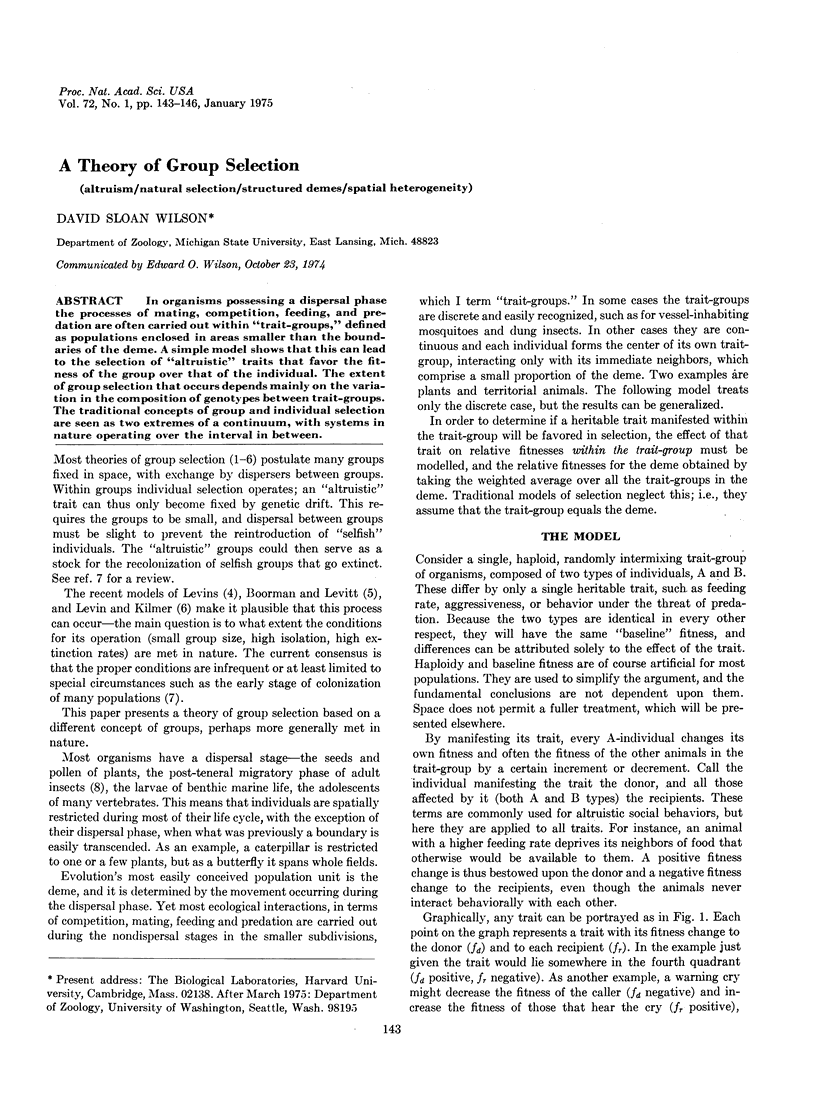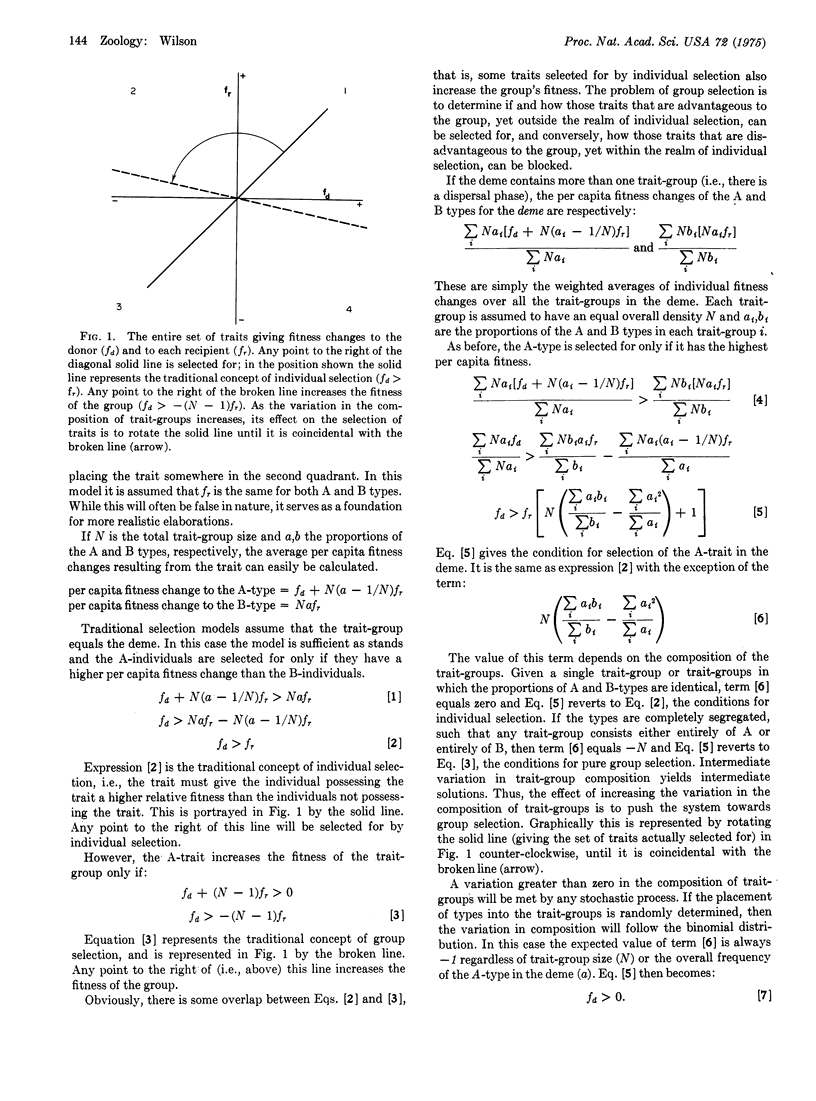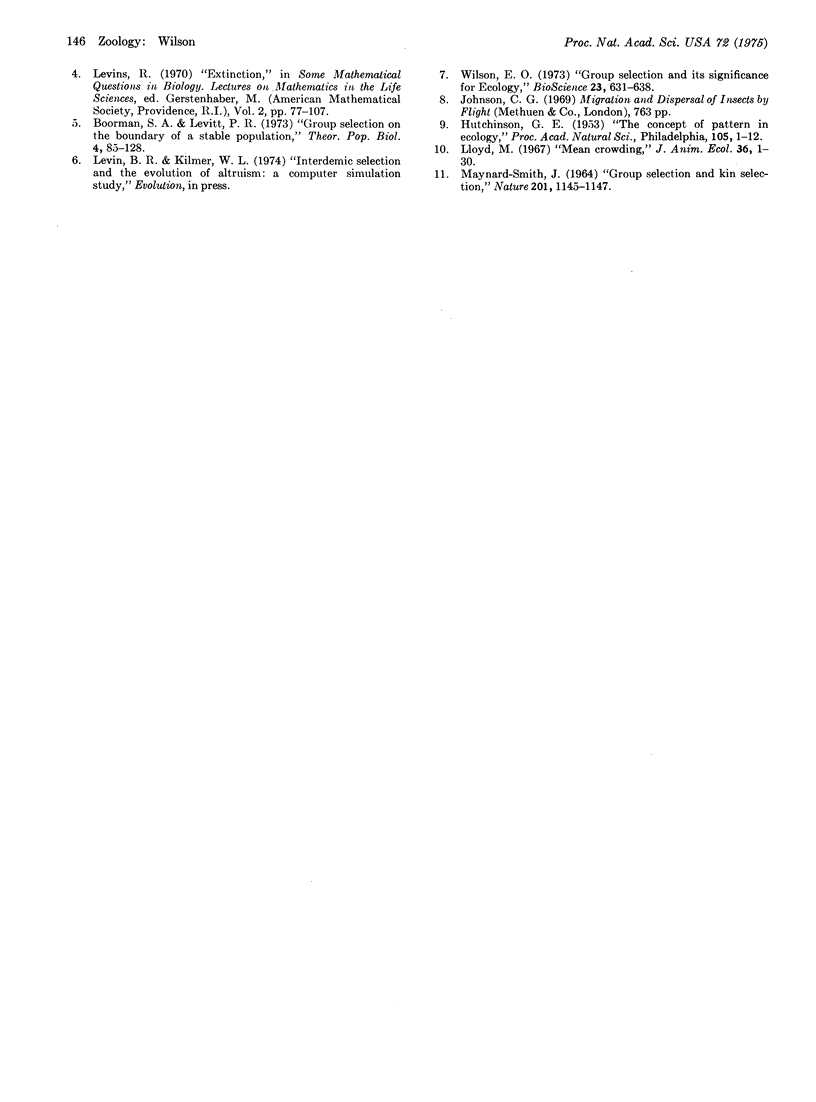Abstract
In organisms possessing a dispersal phase the processes of mating, competition, feeding, and predation are often carried out within "trait-groups," defined as populations enclosed in areas smaller than the boundaries of the deme. A simple model shows that this can lead to the selection of "altruistic" traits that favor the fitness of the group over that of the individual. The extent of group selection that occurs depends mainly on the variation in the composition of genotypes between trait-groups. The traditional concepts of group and individual selection are seen as two extremes of a continuum, with systems in nature operating over the interval in between.
Full text
PDF



Selected References
These references are in PubMed. This may not be the complete list of references from this article.
- Boorman S. A., Levitt P. R. Group selection on the boundary of a stable population. Theor Popul Biol. 1973 Mar;4(1):85–128. doi: 10.1016/0040-5809(73)90007-5. [DOI] [PubMed] [Google Scholar]


